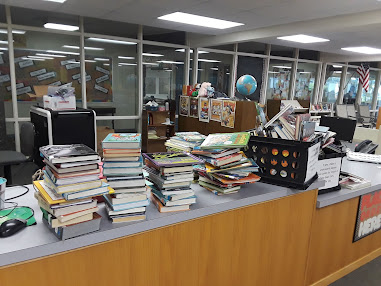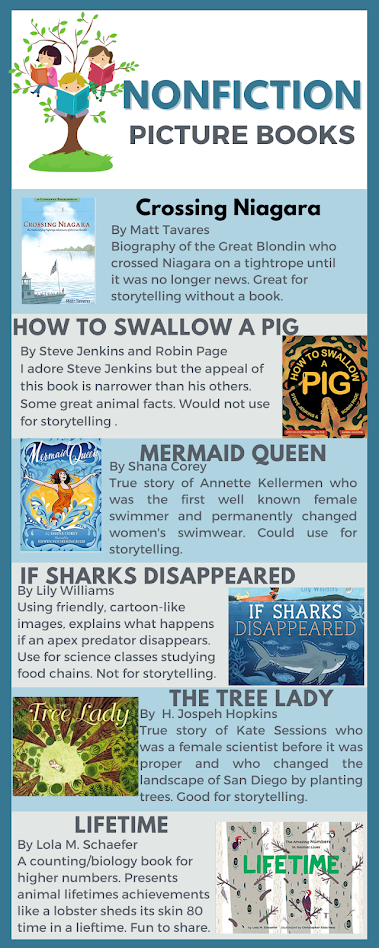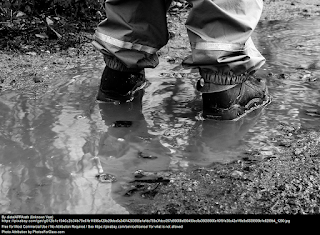AASL And ISTE standards
Necessary background: For 4 years I've been operating a library in an elementary school for 3rd-5th graders in Michigan. Michigan has no state or local (at least in my district) standards for school librarians. I am paid as a parapro. My primary job is to maintain the books, check them out, collect fines. Since I wasn't hired as a teacher, I am not expected to teach. It is a part time job. I am a certified teacher though. Teaching is instinctive for me so I teach while in the library. There is no curriculum. There are no other librarians to learn, grow or collaborate with. The job is whatever I make it. Even with all the lacking parts, I love the job
How can either the AASL or ISTE standards be applied in a state/district that still views school librarians as book-moving luxuries who can be cut in seasons of budget strains? The standards in both AASL and ISTE align with my vision for what a school librarian should be. Yet, the standards feel dreamy and impossible. One of ISTE essentials is consistent and adequate funding! I have no idea how to approach these standards in relation to a library job where collaboration, sharing, growth and sharing are not expected of the librarian.
I enjoyed many examples in Knowledge Quest of practices that supported the standards. Still, it all felt impossible. An article by Cromartie and Burns called "Navigating the Library Slopes: Dispositional Shifts in the National School Library Standards" (2019) helped me shift my thinking. The very first sentence says that the AASL standards, "challenge school librarians to embrace change and imagine the library as an evolving environment, thriving in an ever-changing educational and information landscape." Yes. Ok. Can I use these standards to help administrators see the potential of the librarian position? Maybe. Our district also lacks a digital skills and literacy curriculum, which the ISTE standards definitely speak to. I can't imagine that any educator could deny the need to help kids navigate the technology and online information world in a responsible and thoughtful way.
Cromartie and Burns say the new standards call for a disposition shift in librarians. They write: "Dispositions supporting the Key Commitments and addressing the Competencies champion and revitalize best practices; these best practices can be identified and modeled by the school librarian. Here we offer a newly enhanced set of professional dispositions presented as nouns, personified beliefs the school librarian can embody. These dispositional traits, when embodied, make librarian more valuable. " If administrators could see these dispositional shifts, they might see the potential of the position. For example, a librarian is not a hoarder (materials focus) but a gatherer (learner focus) who curates a collection for the specific needs of the learners and instructors. A librarian is not a seeker (fact finder) but a guide who helps learners evaluate, remix and create (engage). This article gave me a place to start thinking about the standers, and the AASL standards website had many resources for how to engage other stakeholders in a conversation about my position.
As for the similarities and differences between the two sets of standards, the AASL definitely addresses the role of a library more specifically and the ISTE is more specific in terms of types of digital skills that should be learned. Both are useful. The standards help me see why a district needs to have a defined standard for a librarian teacher. It provides direction while establishing valuable, desirable learning outcomes. It is hard to prove value if your main job is book- checker out. Districts need to decide who is responsible for teaching kids the technology skills and thought processes they need to be responsible, thoughtful contributors to the digital world they regularly interact with. Someone needs to teach kids to evaluate research, to formulate their search inquiries, to create ways of presenting information in creative and responsible ways. I think the standards address all these issues and establish the importance of a librarian well.
In case you are interested, here is a link to the one pager the AASL developed to help spark conversations with library stakeholders and educate those stakeholders on the value of librarians: https://standards.aasl.org/project/transform/
Cromartie, L and Burns, E. (2019 May/June). Navigating the library slopes: Dispositional shifts in the National School Library standards. Knowledge Quest 47(5). 80-85.
Image: School library with piles of books on counter and in crate. There is a globe in the background and Chromebook cart. The wall is all windows. Picture taken by Laura Wells




Hello, Laura!
ReplyDeleteIt sounds like you have some incredible opportunities in your future! The lessons, tools, and resources we gain in this program will help you to make a huge difference, not only in your school library but potentially in your entire state!
Both AASL and ISTE standards stress collaboration as a critical tool. Since this sounds like new programs for your school, it may be up to you to be proactive and collaborate with the teachers in your school to implement research skills lessons for their upcoming research reports. You also have the opportunity to work with the teachers to create a digital skills and literacy curriculum that works for everyone. I am not familiar with the Michigan Education System’s technology protocols, but librarians in South Carolina are the “someone”s who teach students how to “evaluate research, to formulate their search inquiries, to create ways of presenting information in creative and responsible ways.”
I found an article that has some information that might be helpful for you. I accessed it through the University of South Carolina’s library. It is titled Supporting You, Supporting the Standards: AASL’s Implementation Plan, by Mary Keeling (2017). You may not get much support initially, but with enough persistence, you will successfully set up your library programs and ensure that they meet your students’ needs. I am so excited for you, your library, and your students!
Best of luck!
Jennifer Phillips
References
Keeling, M. (2017). Supporting you, supporting the standards: AASL’s implementation plan. Knowledge Quest, 46(2), 80–85. http://files.eric.ed.gov
Thanks for the article, Jennifer. I will definitely take a look.
DeleteI couldn't agree with you more that the standards feel "dreamy and impossible." My district also views librarians as book managers more than educators. The analogy of librarians as gatherers and guides rather than hoarders and seekers speaks to my heart. Your link to the AASL article is a great step to explaining to administrators, school boards, and parents about those ideas.
ReplyDeleteI am curious about your current position. Is there another person at your school or district who has the professional title of librarian or are you all classified as para-pros? Are you also responsible for managing the budget and curating the collection? Either way, I am certain that your students appreciate you for your dedication and hard work regardless of your title!
Hi Heather, Our district employs one certified librarian. She spends her days split between the middle school and high school libraries. She is in charge of the checking out of all textbooks at those levels and all chromebooks/document cameras, etc. I am one of five parapros who run the 5 elementary school libraries. We each work 25 hours a week. I raise 85% of my budget, curate the collection, manage volunteers and teach/facilitate each class as it comes into the library once a week.
DeleteHi Laura, I love your pondering of how librarians are not just seekers but also instillers of life-long learners. I further suggest that we should be based in collaboration and use the standards blended as an advocacy tool to change the perception of what we do. Practicing and promoting our profession as guides and educators is all we can do. Sometimes we have to teach what we do to those stakeholders. You do so much with so little. Keep it up. I am sure that your work will shine through.
ReplyDelete